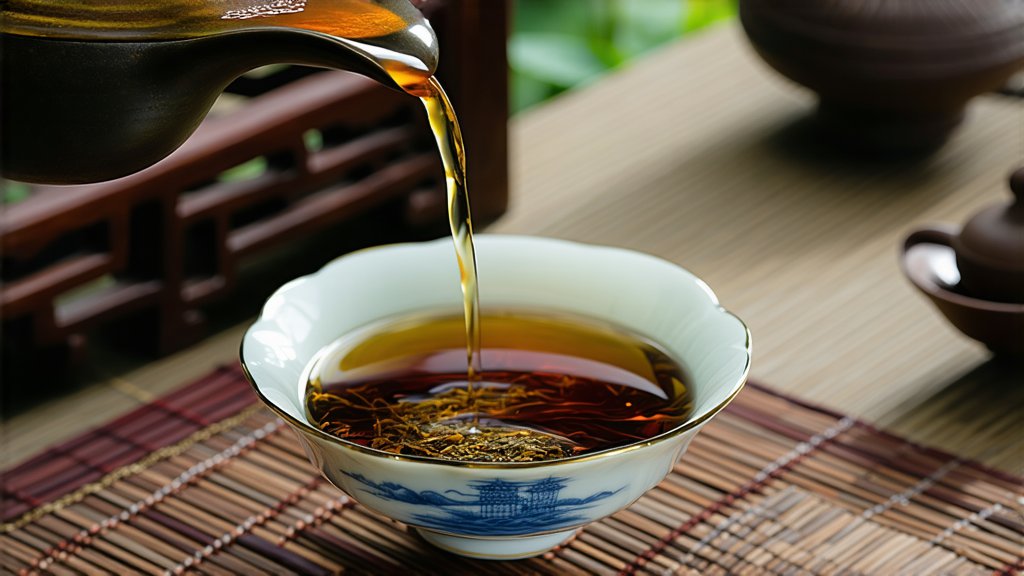
Pu-erh tea, often hailed as the "Dian Hong" (meaning "Yunnan Red") tea, is a unique and revered variety of dark tea originating from Yunnan Province in China. This remarkable beverage has captivated tea enthusiasts for centuries with its rich history, intricate production process, and unparalleled depth of flavor. In this article, we will delve into the fascinating world of Pu-erh tea, exploring its historical background, varieties, meticulous craftsmanship, and the art of tasting.
Historical Background
The origins of Pu-erh tea can be traced back to the Tang Dynasty (618-907 AD), but it gained prominence during the Ming Dynasty (1368-1644 AD). The name "Pu-erh" is derived from the town of Pu'er in Yunnan Province, which served as a crucial trading hub along the ancient Tea Horse Road. This route facilitated the exchange of tea between China and Tibet, fostering cultural and economic ties. Over time, Pu-erh tea evolved into a symbol of luxury and refinement, cherished by emperors and common folk alike.
Varieties of Pu-erh Tea
Pu-erh tea is broadly categorized into two types: raw (Sheng) and ripe (Shou). Each type undergoes distinct processing methods, leading to unique flavor profiles and aging characteristics.
-
Raw Pu-erh (Sheng Cha): This variety is made from sun-dried green tea leaves that have not undergone any artificial fermentation. The leaves are then steamed, rolled, and dried before being pressed into cakes, bricks, or other shapes. Raw Pu-erh is known for its vibrant, complex flavors and potential to improve with proper aging. As it matures, the tea develops deeper, earthier notes, mellowing out its initial astringency.
-
Ripe Pu-erh (Shou Cha): Ripe Pu-erh undergoes a process called "wet piling" or "Wo Dui," where piles of tea leaves are intentionally dampened and left to ferment in a controlled environment. This accelerates the aging process, resulting in a smoother, more mellow tea with rich, dark flavors reminiscent of caramel, chocolate, and dried fruit. Ripe Pu-erh is often considered more approachable for novice drinkers due to its immediate maturity and lack of harsh astringency.
Craftsmanship: The Art of Making Pu-erh Tea
The production of Pu-erh tea is a labor-intensive process that requires skill, patience, and an intimate understanding of the local terroir. Here's a glimpse into the traditional steps involved:
-
Plucking: High-quality tea leaves are handpicked from ancient tea trees, typically during the spring season when the leaves are at their freshest and most nutrient-rich.
-
Withering: The freshly picked leaves are spread out to wilt under the sun, reducing moisture content and softening the leaf structure.
-
Fixation: The withered leaves are briefly steamed or pan-fired to halt oxidation, preserving their vibrant green color and locking in aromatic compounds.
-
Rolling and Shaping: The softened leaves are rolled into tight spirals or twisted into various shapes, depending on whether they will be sold loose or pressed into cakes.
-
Drying: The shaped leaves are dried in the sun or using hot air to remove remaining moisture, ensuring stability for storage and transportation.
-
Fermentation (for Shou Cha): For ripe Pu-erh, the dried leaves are piled together in a humid, warm environment to encourage microbial activity and controlled fermentation. This process can take several weeks to months, transforming the tea into its distinctive dark hue and full-bodied flavor.
-
Aging: Both Sheng and Shou Pu-erh benefit from proper aging, which enhances their complexity and depth. Tea enthusiasts often store their Pu-erh in ventilated, dry environments, allowing the flavors to evolve over time.
The Art of Tasting Pu-erh Tea
Tasting Pu-erh tea is an experience that engages all the senses, from the visual inspection of the dry leaves to the final sip. Here's a step-by-step guide to appreciating this exquisite beverage:
-
Visual Examination: Begin by observing the shape and color of the dry leaves or tea cake. Look for uniformity in size and a rich, deep hue indicative of good quality.
-
Warming the Teaware: Rinse your teapot and cups with hot water to预热 them and eliminate any residual odors that might interfere with the tasting experience.
-
Infusion Preparation: Use a tea needle or putter to break off a small piece of tea cake or measure approximately 5 grams of loose leaves per 150ml of water. Place the tea in a yixing clay pot or a gaiwan for optimal flavor extraction.
-
Rinsing: Briefly rinse the tea with boiling water to awaken the leaves and cleanse them of any dust or impurities. Discard this first infusion immediately.
-
First Infusion: Add boiling water (around 95-100°C) to the tea and let it steep for about 5-10 seconds for raw Pu-erh or longer for ripe Pu-erh. Observe the tea's unfurling and the color transformation of the liquor.
-
Subsequent Infusions: Gradually increase the steeping time for each subsequent infusion, as the leaves open up and release more flavor. Typical sessions involve multiple infusions, each revealing new layers of taste.
-
Aroma Appreciation: Inhale deeply to detect the evolving aromas—fresh earthiness for raw Pu-erh or warm, woody notes for ripe Pu-erh.
-
Tasting: Sip slowly, allowing the tea to coat your palate. Notice the initial taste, mid-mouth feel, and aftertaste. A well-crafted Pu-erh should offer a harmonious balance of sweetness, bitterness, and astringency.
-
Finish: Pay attention to the lingering sensations and the tea's "mouthfeel." A high-quality Pu-erh will leave a pleasant, lasting impression.
In conclusion, Pu-erh tea is not merely a beverage; it embodies centuries of Chinese tea culture, craftsmanship, and tradition. Its ability to transform over time, both through natural aging and skilled human intervention, makes it a living testament to the artistry and patience inherent in tea making. Whether you prefer the youthful vigor of raw Sheng or the mellow sophistication of ripe Shou, exploring Pu-erh tea is an invitation to embark on a sensory journey that transcends borders and generations.